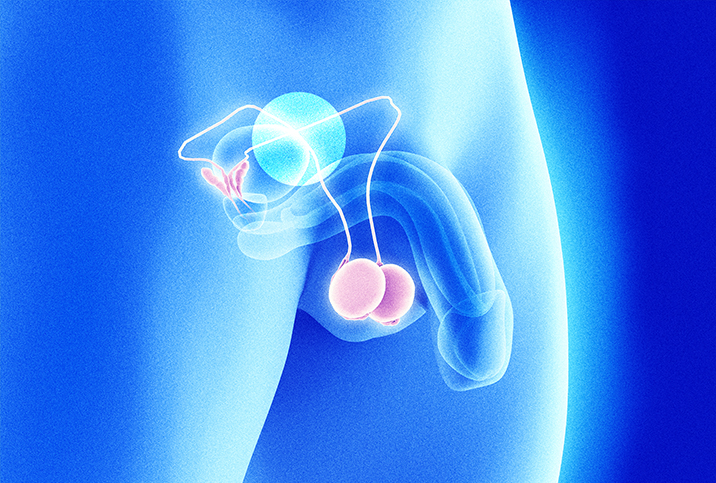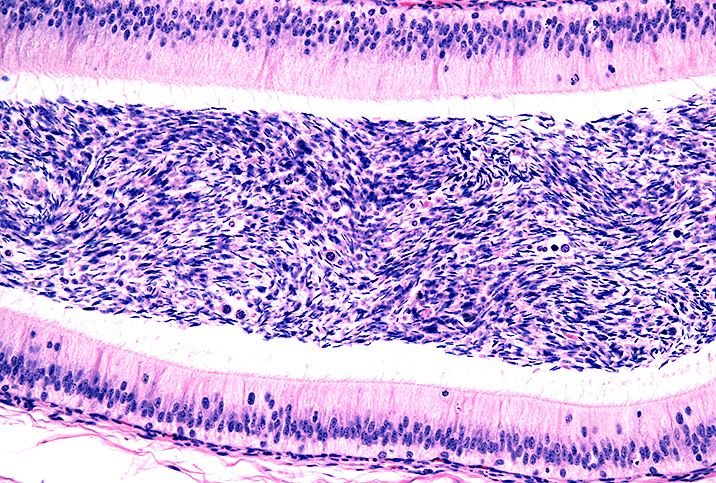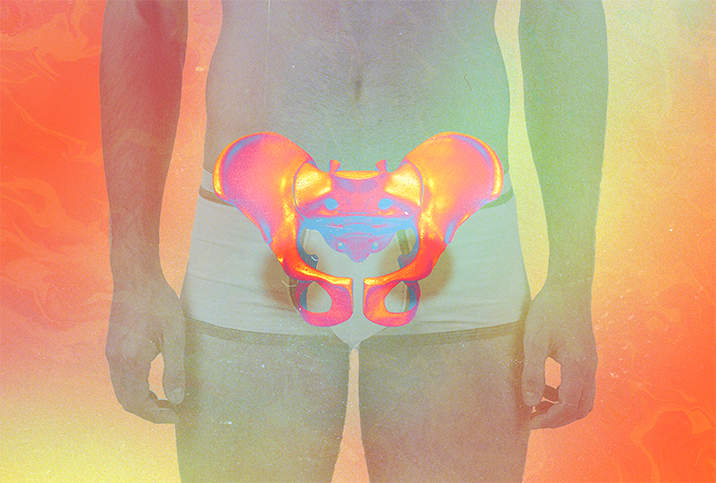Does a Spermatic Cord Block Help Treat Testicular Pain?

Thirty years ago, many young men often came to urologist Laurence Levine, M.D., with severe pain in their testicles. They told him they had already seen five or six doctors without any relief.
Doctors gave them courses of antibiotics and anti-inflammatories—all to no avail.
"They said, 'Hey, Doc, just cut the thing off,'" said Levine, a professor of urology at Rush University Medical Center in Chicago. "I was like, wow, this is pretty devastating for a young man to say, 'Cut my nut off.' There's got to be a better way."
What is a spermatic cord block?
Levine came across a case report about a surgery called microdenervation of the spermatic cord, the structure that contains nerves, blood vessels and the vas deferens, which carries sperm out of the testicle.
In the late 1980s, Levine started performing this procedure, which remains the surgical treatment of choice for chronic scrotal content pain.
However, before microdenervation is performed, a spermatic cord block is done to determine if the pain is coming from within the scrotum. A spermatic cord block is a quick and minimally invasive procedure in which a small needle is used to inject a combination of anesthesia and steroids.
"Spermatic cord block is part of the diagnostic routine, but if they have a good response, it may be potentially even a therapeutic one," Levine said.
Levine recently co-wrote a study published in the Journal of Urology that looked at relief of chronic scrotal content pain after a series of spermatic cord blocks.
Of the 44 men who underwent the series, 70.5 percent experienced sustained relief and 20.5 percent had a complete resolution of their pain.
What is chronic scrotal content pain?
Chronic scrotal content pain, which affects approximately 100,000 men in the United States, is defined as three or more months of constant or intermittent pain in the scrotum.
Men of all ages can experience this pain—it can come from a variety of sources—and some have a recent history of trauma, infection, tumor, varicocele or testicular torsion.
Pain from a kidney stone or the spine or hip can radiate to the testicles. A substantial number of men have some form of pelvic floor dysfunction, where they are unable to relax and coordinate their pelvic floor muscles. Some men have scrotal pain after a vasectomy.
"There is a large population of men who have pain for no obvious reason," said Scott Lundy, M.D., a urologist and men's health and infertility fellow at the Cleveland Clinic. "They've never had surgery or infections, but they have this pain and it's very debilitating for them."
How do urologists treat scrotal pain with a spermatic cord block?
When a patient comes to Lundy with chronic scrotal content pain, he said his first job is to identify whether the pain is coming from the testicle or going to the testicle.
For example, if the patient has chronic pelvic pain syndrome (CPPS) or a kidney stone, the pain begins somewhere else and radiates to the testicle.
"The treatment for that is to fix the other problem first," Lundy said. "In men who have pain in the testicle or we're not sure if the pain is coming from the testicle, then a spermatic cord block can help us identify whether the testicle is the source. But it can also predict whether we can remove that pain by permanently dividing those nerves."
If the patient has testicular pain without an obvious cause, Lundy injects a local anesthetic into the spermatic cord and sees whether the pain goes away over the next few hours.
"If the pain has gone away, then we can be relatively confident that the cord denervation surgery is going to be successful," Lundy said. "If it's not successful, then we are reluctant to proceed with that surgery because the best surgical intervention won't be any better than the numbing procedure itself."
According to Levine, of the men who have a good response to a spermatic cord block, approximately 15 percent to 20 percent consider undergoing a series of blocks.
"The great majority would say, 'That was the greatest five hours I've had in a year, I want the surgery.' And others will go for the block," Levine said. "It kind of feels like how they're tolerating their pain and what their lifestyle is."
What does microdenervation entail?
While the spermatic cord block procedure takes about five minutes, microdenervation of the spermatic cord generally requires an hour or two. It's an outpatient procedure, so the patient goes home the same day and recovers at home.
The surgery is performed through a 1-inch incision next to the penis. Patients usually receive general anesthesia, where they're fully asleep for the surgery, Lundy said.
"We locate the external inguinal ring to identify where the cord is coming out of the abdomen, and then we make a small incision just below that, next to the penis, through the skin and the superficial layers," Lundy said. "And then we elevate the spermatic cord out of the body and into the operative field, and place a small rubber tube behind it."
Using a microscope to make sure he doesn't damage arteries or lymphatic tissue, Lundy divides the tissue of the spermatic cord and breaks apart the nerves.
"Our goal is to get rid of all the extra tissue but leave the arteries and lymphatics and at least one vein behind," Lundy said. It divides the nerve fibers.
After the tissue is cut out, what comes next is up to the patient. If they hope to have children in the future, Lundy leaves the vas deferens intact. But if the patient is fine with not having children or has had a vasectomy, Lundy divides the vas deferens, as well, because it has nerves in it.
Lundy called microdenervation of the spermatic cord "the gold standard" for the treatment of chronic scrotal content pain.
"We are quite confident that outcomes are good, and we can help the majority of men if we think the testicle is the source of the pain and the block works," he said.
Don't ignore testicular pain
Levine emphasized that chronic scrotal content pain is not rare and can be devastating for a man in terms of compromising their quality of life. It affects their ability to perform daily activities, have sex, play sports or even sit for prolonged periods.
Lundy said it's important that men do not ignore testicular pain and consider seeking treatment.
"We have to make sure that they don't have something very ominous going on, like a tumor," Lundy said. "But I think it's also important that they know that they don't have to suffer. Men who have chronic pain, many of them will have options for treatment that can help their condition and help make them more functional and live happy, healthy lives."
The pain can be severe due to all the sensitive nerves in the testicles. But there is treatment available.


















